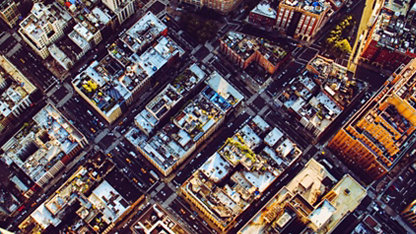The NFT phenomenon is helping artists attain ownership for their digital work – but what does it mean for art valuers?
What is an NFT?
A non-fungible token (NFT) is a verifiably unique and scarce piece of digital media that represents immutable ownership. Powered by Ethereum technology, it holds a digital record of an item’s transaction history, using smart, self-executing contracts that are written into a blockchain’s code. Once minted, it is launched onto a public network where users can verify its authenticity and trade it on the secondary market for cryptocurrency.
Growth of the NFT market
NFT sales reached almost $41bn by the end of 2021, precluding sales of NFTs minted on other blockchains. The market is expected to keep climbing, yielding $535m in February 2022. Driven by digital arts and collectibles, it shows considerable potential to surpass the global arts market in value, which generated $50.1bn in the same year.
Why the rise in market attention?
NFTs caught mainstream attention in March 2021, when Beeple’s “Everydays: The First 5000 Days” fetched $69.3m at Christie’s auction house. This controversial sale provoked a widespread foray into NFTs, snowballing across corporate players from sports and entertainment. This has included rival auction house Sotheby’s, which has since launched the Sotheby’s Metaverse and now accepts cryptocurrency bids on its NFT lots.
Could NFTs transform the art world?
The influx of investment into NFTs highlights not just an interest in digital art, but the unique value proposition of digital scarcity and ownership. The art world recognises the paradigm shift NFTs have provoked; by importing the elements that endow valuable physical art into the digital world, it has opened doors for valuable digital art and reformed market opportunities for artists.
Impact on valuation
There are apprehensions around how to value digital artworks and generate interest from traditional art buyers. While the concept of immaterial works may not discourage buyers, there are barriers to inspiring confidence in the crypto market side; NFT space is decentralised and unregulated, leaving it open to fraud and scams. The market can be easily inflated by ‘wash trading’, which in the art world is a far more costly enterprise for those who are caught.
Speculations extend to this newer market’s resilience. Sotheby’s claims that months of peak and dip cycles, with the aid of highly available provenance, have influenced NFT collectors to purchase stringently. The resilience of these collectors and the entry of large clients like investment funds evidence that the market is not a ‘bubble’ but is establishing strong communities and interest groups. It adds that the continued success of generative artworks, like the 1960s computer based Fidenza collection, can be attributed to their longevity, and will remain important to the market’s success.
Sotheby’s itself has been sourcing artwork from established artists, to ensure works have a secondary market life. With this market knowledge of artists, it applies its own in-house expertise and consultations with collectors to understand what makes NFT artworks valuable and which artists will next become important in NFT space. Still, it is unclear which digital works should fall into the category of art or collectibles. Popular platform OpenSea shows blurred lines between assets, exposing a need for clarity, stability, and transparency to attract new collectors. Sotheby’s Natively Digital: A Curated NFT Sale, is an indicator that the market is open to hybridisation of arts, games, and sports, rendering certain distinctions - including the art market’s ‘standard’ segment – obsolete, while it has sold other items individually, such as CryptoPunk 7523, implying that some still warrant specific treatment.
Moving toward transparency
The art world may find exponential growth from investing in NFTs; they present benefits for artists, curators, and collectors alike, and a capacity to evolve alongside blockchain technology. For now, there remains ambiguity in NFT marketplaces which requires pragmatic solutions from the art world to uphold a principal-added value of trust.
The future of NFT markets puts the role of valuers centre stage and demands a greater depth of knowledge than ever before. RICS UK Valuation Conference 2022 offers:
- A leading exchange of valuation knowledge, experience, and professional insight
- Live sessions and post-live events
- Opportunities to network and interact













